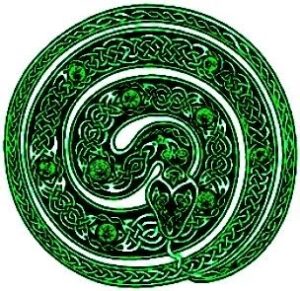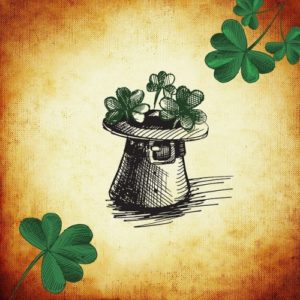All Snakes Day vs. St. Patrick’s Day

“The “snakes” that Patrick drove out of Ireland were said to be the Druid priests”
In the cultures that didn’t tell stories about the Garden of Eden, snakes were an ancient symbol of wisdom; Pagan wisdom. Snakes protect your grain from mice; snakes shed their skin each year and keep on growing–what a symbol of rebirth that is–and snakes are mostly not remotely interested in harming humans, let alone tempting them to eat fruits and vegetables.
So snakes and Pagans, go way back.
As many know St. Patrick is regarded as the primary Patron Saint of Ireland. His elevated status to Patron Saint is mostly due to the legend of him introducing Christianity to Ireland. (It should also be noted that his primacy was not always the case. It would appear that St. Brigid, A Celtic Priestess was the most venerated Celtic Saint until the patriarchal Roman Church eclipsed the Celtic Church). In my opinion, the feminine should be embraced, considering Ireland herself is feminine and named after the Goddess Éirú, but that is a story for another day!
St. Patrick claimed he had a vision that told him to bring Christianity to the Irish people, who were predominantly pagan and druid at the time, so he made his way back to Ireland from Britain and brought a big ol’ bag of Christianity with him.
He also may be the one responsible for popularizing the shamrock or “that three-leafed plant” you’ll see plastered all over buildings and clothing today. According to legend, St. Patrick used it to teach the Irish the concept of the Christian Holy Trinity. They already had triple deities and regarded the number three highly, so Patrick’s use of the shamrock may have helped him win a great deal of favor with the Irish.
All Snakes’ Day represents Patrick “driving out the snakes”, factually or not, it is Catholicism’s conquest over Paganism in Ireland. Hence the metaphor “Snakes = Druids”.
Many St. Patrick’s Day celebrators have heard of the meme that “snakes are Druids”, exclaiming that we’re followers of the Old Ways, and thereby fitting the notion that we don’t exist anymore. Some of them may even approach us wondering why in the world we’re wearing snakes, creating an excellent opportunity to reach out and educate people about our beliefs and/or the real history of St. Patrick, while still speaking the language of symbolism that non-Pagan-scholars can understand.
Quoting Morgan Daimler, “Bad history does Paganism no favors.”
There were never actually any snakes on the island to begin with and paganism thrived in Ireland for generations after Patrick lived and died.
There was no Irish pagan genocide, no recorded proof of any great violent Druid purge in Ireland, it simply doesn’t exist outside rumors. By the time they started speaking of snakes and Druids, Irish paganism was already a remnant, and Irish Christianity was the dominant religious force on the island.
Due to the fact it took place in the 17th Century to commemorate the life of Saint Patrick and the arrival of Christianity in Ireland. This “Feast Day” always took place on the anniversary of Patrick’s death, which was believed to be March 17, 461 AD. Irish immigrants brought the tradition over to the American colonies, it was there and then that Saint Patrick started to become the symbol of Irish heritage and culture that he is today. As more Irish came across the Atlantic, the Feast Day celebration slowly grew in popularity. So much so, in fact, the first ever St. Patrick’s Day parade was held in Boston in 1737. All considered giving us the date: March 17th Every Year.
So Mister Saint Patrick, You didn’t chase us out of Ireland, there were no snakes, Druidry is still very much a path taken and practiced. We don’t blame you for these stories, Pagans are forgiving!
On March 17th, show your Pagan pride through embracing transformation, travel and a rebirth of your inner spirit.
If you actually read this than we honour you with a 30% off Sale on all things GREEN… until March 18th Happy All Snakes Day And Blessed Be

